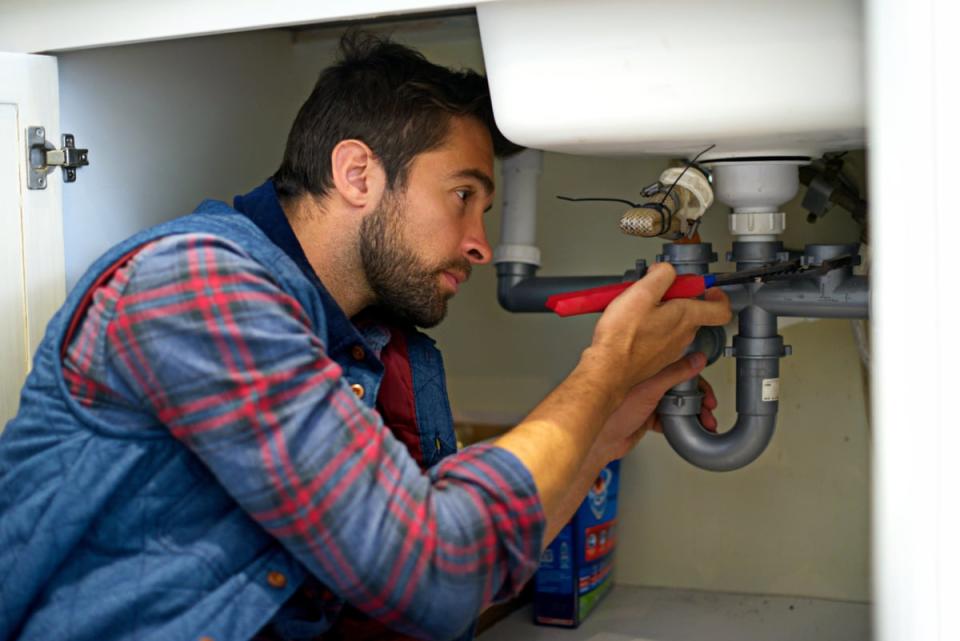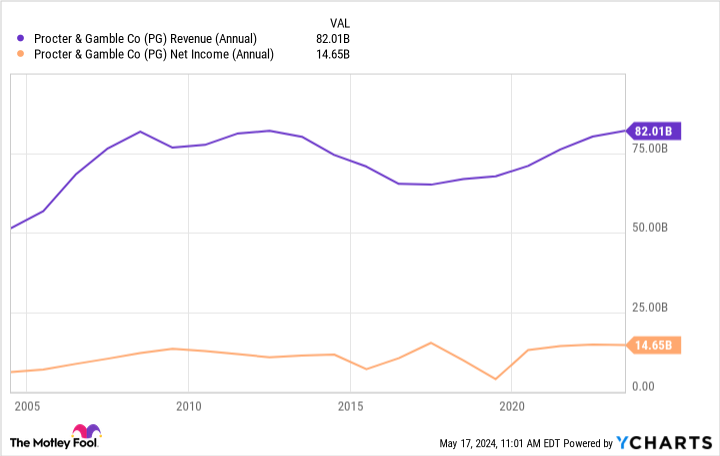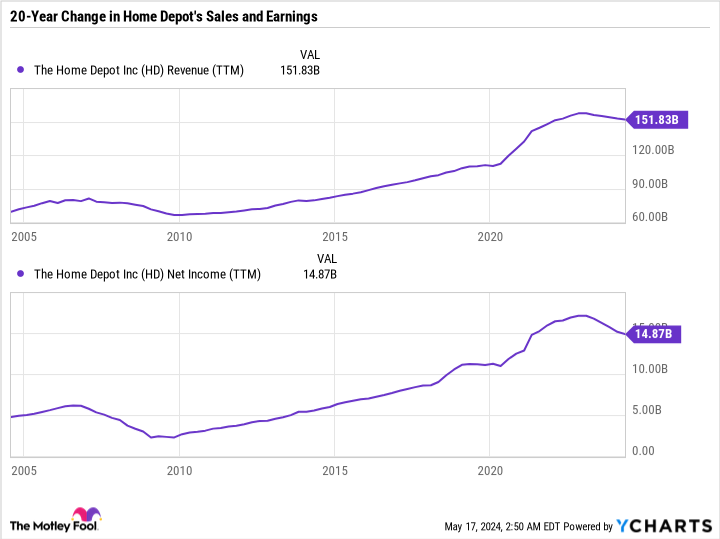Stock market corrections, and especially bear markets, have traditionally provided some of the best buying opportunities. During a correction, investors are skeptical of the near-term performance of a company, and some choose to sell stocks rather than hold them through periods of volatility. Even the best companies can see their stock prices plummet along with the broader market even if their long-term investment theses remain intact.
Here’s why Caterpillar (NYSE: CAT), Procter & Gamble (NYSE: PG), and Home Depot (NYSE: HD) stand out as three dividend stocks worth buying during a market correction.

Cyclical earnings but a non-cyclical dividend
Lee Samaha (Caterpillar): This heavy equipment company might seem an odd choice here, but hear me out. While the company’s revenue and earnings will always ebb and flow with its key end markets, its free cash flow (FCF) generation will likely cover its dividend across various market conditions.
That makes Caterpillar a good “go-to” stock for income-seeking investors in a stock market downturn. In other words, if its stock is falling, its dividend yield will rise, and since its dividend is sustainable, investors can confidently buy the stock for its yield. Let’s play with some numbers to demonstrate this.
The company’s current dividend payment is around $2.6 billion. However, management’s estimate for its machine, energy, and transportation (ME&T) FCF through the cycle is $5 billion to $10 billion. In case you are wondering, Caterpillar defines its FCF in this way to eliminate the noise around its FCF figure created by its financial arm.
The FCF target range recognizes that its revenue and earnings are volatile and depend on market conditions in industries like construction, mining, energy, and infrastructure. Still, the key point is that even at the bottom of the cycle, $5 billion in FCF will easily cover its $2.6 billion dividend. In fact, there’s a strong case that Caterpillar should be more aggressive in increasing its dividend.
In addition, Caterpillar’s focus on growing its less cyclical services business (with the goal of doubling services revenue from $14 billion in 2016 to $28 billion in 2026) will reduce cyclicality and improve FCF generation in the future.
P&G is a regal choice for a safe dividend play
Scott Levine (Procter & Gamble): While the S&P 500 has consistently roared higher through the first half of 2024, experienced investors know that the market’s rise can’t continue indefinitely. Granted, no one wants to see their investments decline in value, but market corrections provide excellent opportunities to pick up solid stocks at a discount — solid stocks like Procter & Gamble.
With a history that stretches back 187 years, P&G has demonstrated considerable resilience in withstanding market downturns and other challenges, making it an ideal consideration for investors looking to fortify their portfolios with a leading consumer staples stock that currently offers a 2.4% forward-yielding dividend.
From fabric care to beauty to grooming, P&G has a wide variety of brands in its impressive portfolio. And while consumers may cut back on streaming subscription services or go out to eat a little less often, it’s highly unlikely that they’ll stop buying baby diapers or decide to cut back on buying shampoo and deodorant. Plenty of companies could see declines in revenue and earnings, but P&G is well positioned to withstand the volatility.
So it’s not so hard to understand why the company has racked up such an impressive history of rewarding shareholders. For 134 straight years, P&G has paid a dividend, and it has hiked its payout higher for the past 68 consecutive years, earning it the title of Dividend King.
Home Depot is poised to thrive over the long term
Daniel Foelber (Home Depot): Cyclical companies like Home Depot are more prone to slowdowns than recession-resistant companies like Procter & Gamble and Coca-Cola, which enjoy relatively stable demand no matter what the economy is doing.
Home Depot depends on the strength of the consumer and, to a lesser extent, professional contractors. A growing economy is a boon to Home Depot’s business. When consumers are financially stable, they may choose to take on an expensive home renovation. Similarly, the construction industry and contractors can gain more business when demand is high — which, again, depends on a good economy.
Since the 2007-2008 financial crisis, Home Depot has enjoyed a mostly uninterrupted period of sales and net income growth — until recently.
The slowdown over the last year or two is evident in the chart. In its Q1 2024 earnings release from May 14, Home Depot reaffirmed its guidance for 1% sales and diluted earnings-per-share growth. But Home Depot’s 2024 calendar includes an extra week than 2023. Factoring that in, sales and earnings are expected to decline slightly.
Home Depot has done an excellent job investing in long-term growth while managing its inventory to prepare for slowing demand. It has made some of its largest acquisitions in company history over the last few months, which is a contrarian move given that Home Depot is facing a slowdown, not an expansion. But the company can afford to make moves like this due to the strength of its balance sheet.
With a payout ratio of 57%, Home Depot can afford to continue raising its dividend even if earnings growth slows. The company has increased its dividend by 65% in just the last five years. With a yield of 2.6%, Home Depot can be a strong source of passive income and the perfect industry-leading business to scoop up if it falls out of favor for short-term reasons.
Should you invest $1,000 in Caterpillar right now?
Before you buy stock in Caterpillar, consider this:
The Motley Fool Stock Advisor analyst team just identified what they believe are the 10 best stocks for investors to buy now… and Caterpillar wasn’t one of them. The 10 stocks that made the cut could produce monster returns in the coming years.
Consider when Nvidia made this list on April 15, 2005… if you invested $1,000 at the time of our recommendation, you’d have $635,982!*
Stock Advisor provides investors with an easy-to-follow blueprint for success, including guidance on building a portfolio, regular updates from analysts, and two new stock picks each month. The Stock Advisor service has more than quadrupled the return of S&P 500 since 2002*.
*Stock Advisor returns as of May 13, 2024
Daniel Foelber has positions in Caterpillar. Lee Samaha has no position in any of the stocks mentioned. Scott Levine has no position in any of the stocks mentioned. The Motley Fool has positions in and recommends Home Depot. The Motley Fool has a disclosure policy.
3 Super Safe Dividend Stocks to Buy in a Market Correction was originally published by The Motley Fool
Source Agencies




